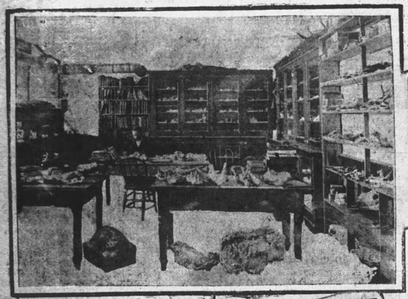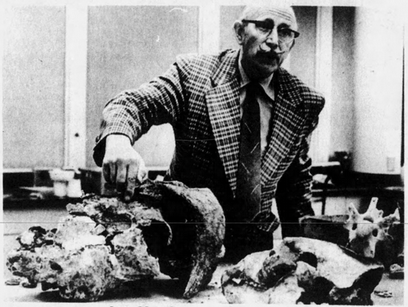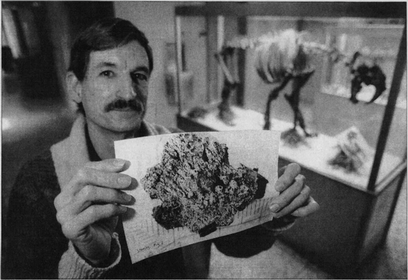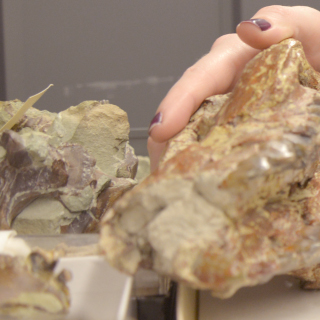History
The UM paleontology collection basically started with the start of the university. Earl Douglass met with the President and professors at the UM in the fall of 1898. They were enthusiastic about his fossil collections and wanted to make arrangements for storing and exhibiting his specimens. Although funds were scarce and the buildings not yet completed, they were interested in providing him with a lab where he could continue the study of his fossils.
Douglass moved to Missoula in early 1899. He received UM's very first master's degree in June 1899 titled, 'The Neogene Lake Beds of Western Montana and Descriptions of Some New Vertebrates from the Loup Fork'. By 1900, Douglass went on to Princeton, then to the Carnegie Museum. It was here that on August 17, 1909, near Jensen, Utah he discovered the dinosaur deposits that would become Dinosaur National Monument.
Unfortunately, after Douglass left the UM in 1901, paleontology experienced a long period of inactivity. The next paleontology thesis came out in 1927 and research would increase throughout the 1930s with profs Charles Deiss and R. C. Rowe. No other theses would come out again until the 1950s when Dr. Robert Fields took over. In an article from the Billings Gazette on January 30, 1966:
"Western Montana holds treasure more precious than gold for the vertebrate paleontologist. And now, after more than a decade of rugged spade work, Dr. Robert Fields of the University of Montana has an honest-to-goodness, first rate curriculum offering the fossil sciences.
"It's ironic," Dr. Fields said the other day. "When I came here in 1955 the university had just three vertebrate fossils [Dougalss took most of the specimens with him to the Carnegie]. Yet the first master's degree awarded by UM in 1901 [1899] was in the field of vertebrate paleontology."
Dr. Fields' arrival signaled a new era and paleontology was once again fully approved. His focus was on the Cenozoic mammals of Montana and Idaho. Around 10 theses were produced under his guidance. Also the Bear Gulch Limestone fossils were discovered by local ranchers in 1968. This ~325 million year old marine deposit was full of fish and invertebrates. Much of the early research on this site was done by William "Bill" Melton who was the curator of the paleontology collection from 1966 until his retirement in the mid-1990s.
The focus on vertebrate paleontology would fizzle out again in the late 1970s, towards the end of Dr. Fields' career (retired in 1982). A new paleontologist was hired in 1982, Dr. George Stanley Jr., an invertebrate paleontologist, who studied late Triassic coral and the focus of the collection shifted to invertebrate research.
However, Dr. Stanely was able to appeal to the Board of Regents and established the University of Montana Paleontology Center (UMPC) in 2005. Dr. Stanley was also able to secure a large National Science Foundation grant to renovate the collections room in 2008. This included installing the Space-Saver compactor system, climate control, and new high efficiency lighting. The UMPC stayed active until his retirement in 2018. Since then, the collection has remained an important resource for researchers across the globe but currently does not support any UM research.

The Anaconda Standard | Sun., April 15, 1900

The Billings Gazette | Wed., November 23, 1977

The Missoulian | Sat., December 26, 1998
